The subspecies of the common pumpkin gained fame due to early maturity, unpretentiousness and productivity. Even an inexperienced gardener will be able to breed zucchini. Planting and care in the open ground for this gourd crop will not be a hassle. The pulp of the fruit has a pleasant taste, it is fried, stewed, used to make desserts.
Material Content:
Varietal variety of zucchini
Hybrids bred in the West have the fruits of the correct form with a thin skin. Early varieties of domestic selection are characterized by the greatest cold resistance. Zelentsy superearly zucchini can be consumed or sold 5-6 weeks after sowing in open ground. Early varieties are especially popular in the northern regions.
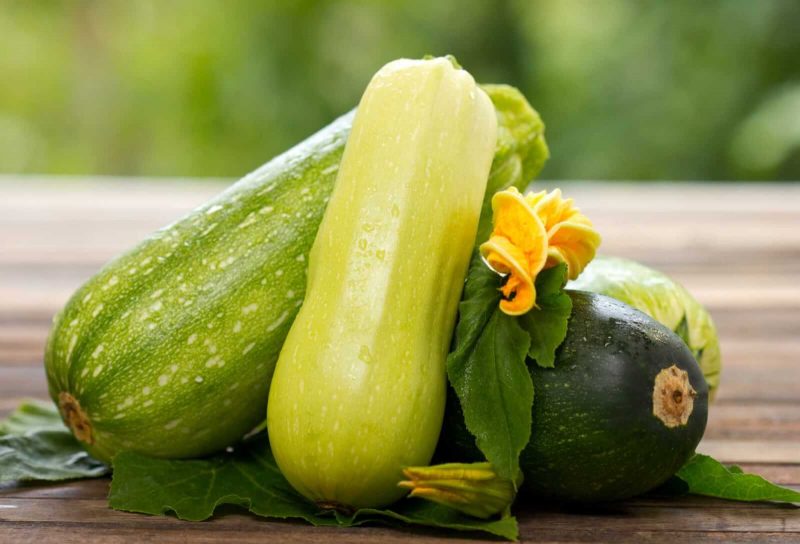
When buying seeds or seedlings, you must pay attention to the following features of planting material:
- Ripening period (early, middle or late).
- The growth form is climbing for large areas, bush for small areas, compacted landings.
- Variety or hybrid. In the second case, they get an excellent harvest, but when the seeds are sown, the signs are lost.
- Needs pollination or parthenocarpic, which is important for growing indoors.
Modern foreign varieties and hybrids are mainly produced using GMOs (genetically modified objects).
Many vegetable growers grow zucchini together or instead of “regular” zucchini.This is not a separate species or variety, but a form that differs in the color and thickness of the skin, the taste of the pulp. Zucchini is painted in yellow and green colors, can have almost black peel. Growing zucchini from different groups is not much different. However, zucchini has an advantage - a delicate pulp with a pleasant taste.
Varieties of zucchini for open ground
Zucchini and zucchini for growing in open field in the middle lane differ not only in maturity. Some are universal in terms of application. Others are used primarily for the preparation of caviar and canning.
Tsukesh
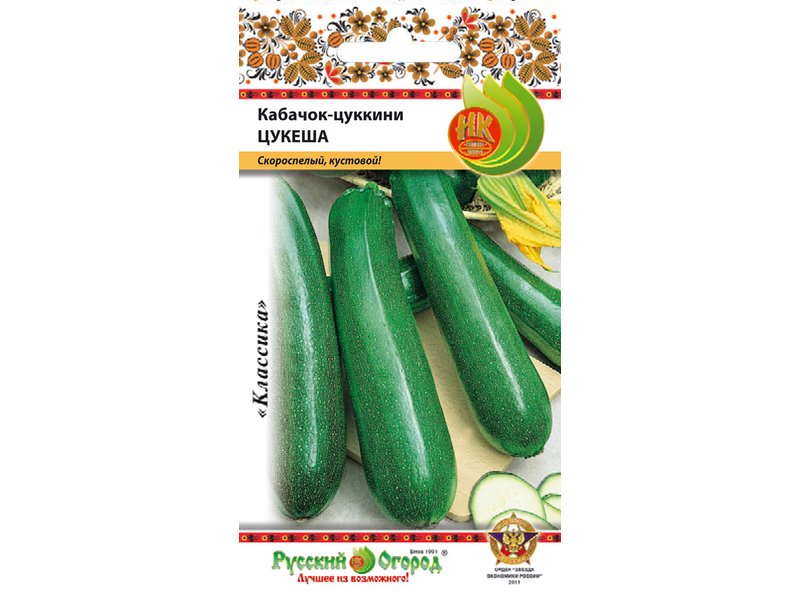
An early variety of zucchini for growing in open and closed ground. The fruits are dark green, the flesh is white, juicy. Harvested greens can be kept fresh in the refrigerator for more than 2 weeks. Use fresh and canned.
Iskander F1
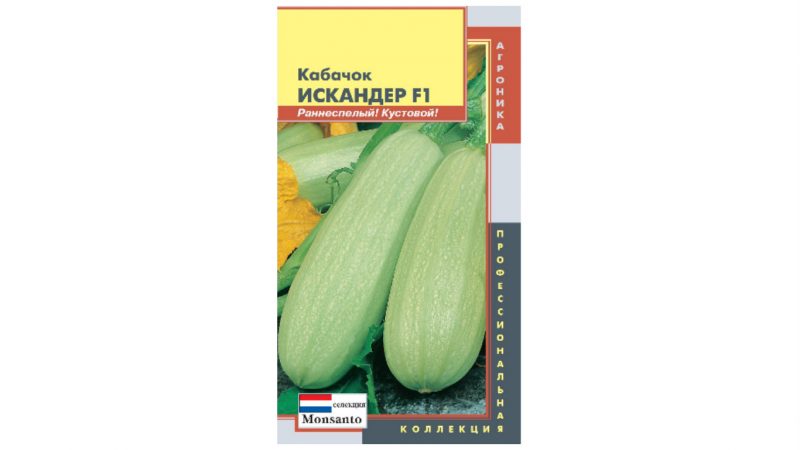
Hybrid early ripening. The fruits are cylindrical, light green in color. The pulp has a delicate sweet taste. Greens are collected, reaching 17–20 cm in length. After ripening, the fruits do not lose their taste and juiciness.
"Aeronaut"
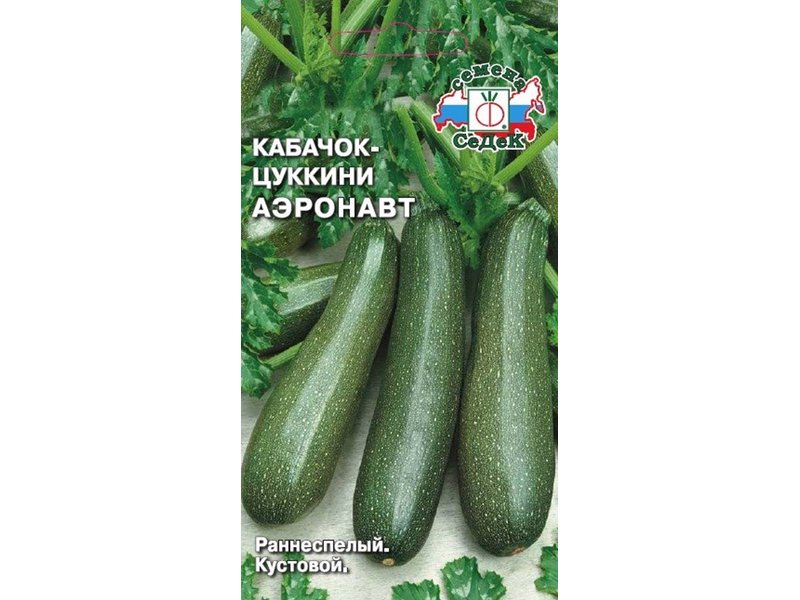
Early grade. Fruits covered with dark green skin are removed when they reach a length of 15 cm. It can be transported without prejudice to presentation. Suitable for salads, heat treatment and canning.
Tasty recipe:zucchini in the oven recipes quickly and tasty
"Zebra"
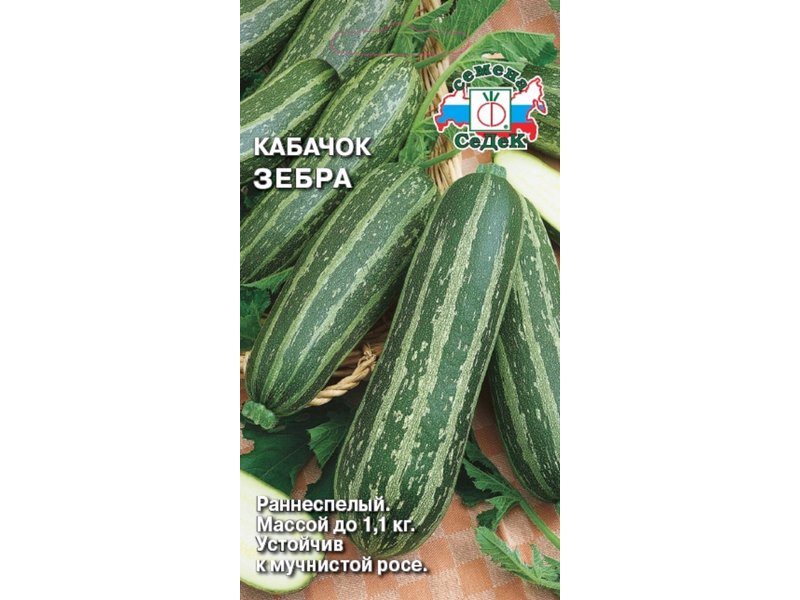
An early variety of zucchini with striped fruit color. It can be grown in open and closed ground. From the time of sowing to the appearance of the first crop of Zelentsy, 38 days pass. Cold resistance is quite high. The fruits are slightly damaged during transportation.
"Polar bear"

Shrub variety resistant to temperature drops. Suitable for regions with a cold spring. Zelentsy are ready for use within 5 weeks.
"Amber"
40 days pass from sowing seeds to fruiting. The fruits have a light green color, delicate flesh. Used for cooking and canning.
Sote 38
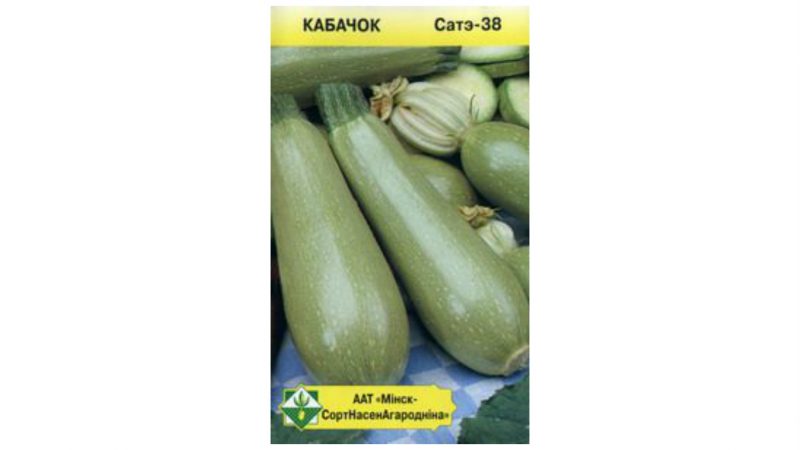
A medium early variety intended for canning. From seedlings to technical maturity, an average of 45 days passes. Fruits of yellow color, 25 cm long, up to 6 cm in diameter. The pulp is dense, white. Good taste, high resistance to diseases and pests.
Basic requirements for growing
The yield of any vegetable crop depends on careful soil preparation, seed quality, and timely sowing. It is recommended to observe crop rotation, to prevent thickening of seedlings. It is better to use the seedling method of growing zucchini.
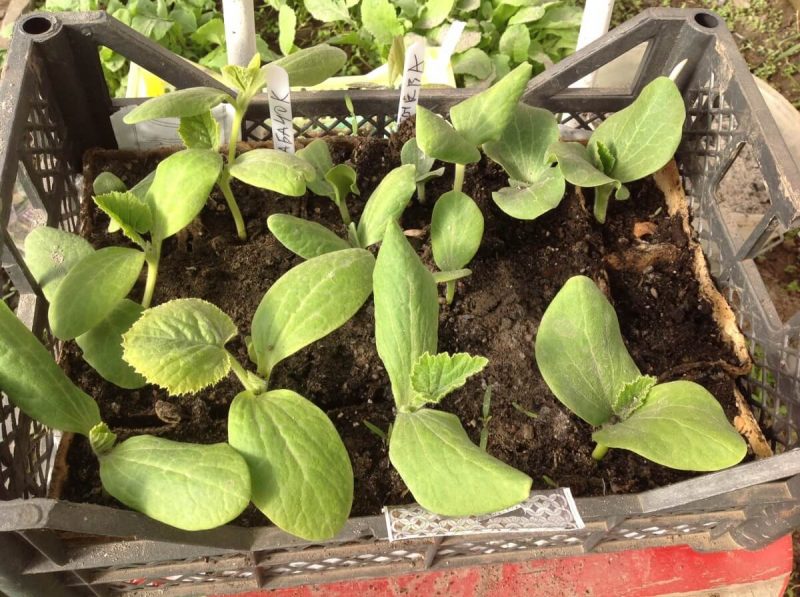
Loosening and mulching contribute to the preservation of moisture and better aeration. To replenish nutrient reserves, liquid feeding will be required. Weeds should be carefully removed, pests and diseases should be controlled.
Growing seedlings at home
This method is considered optimal at high risk of death of plants from the cold and spring frost. Also, growing seedlings allows a third or half to shorten the period from sowing to harvest. Thanks to this method, two crops can be obtained on the same plot. Seedlings are prepared in greenhouses, greenhouses, on a window in a house or a room greenhouse.
Before planting, the seeds are disinfected, hardened and germinated:
- For disinfection, they are placed in a dark purple solution of potassium permanganate or a solution of aloe juice in water.
- A hardening procedure is considered to be short-term heating of seeds in hot water at temperatures up to 50 ° C, then cooling at 10-15 ° C.
- For germination, place seeds for 24–48 hours on gauze moistened with water.
Plastic, paper or peat cups are filled with a loose, nutritious substrate, for example, soil for gourds. Two seeds are placed in one cup, watered. Place containers with zucchini seedlings on the windowsill from the south or southeast side. With a lack of lighting, the sprouts are weak, elongated. Watered once every 3 days, loosen the soil.From the shoots that appeared in one cup, choose the strongest, pinch the other.
Planting zucchini in the open ground
You can plant seedlings in a greenhouse or greenhouse in early May. For planting in open ground, it is important to consider the date of late spring frosts in your region.
How and when to plant?
Sowing time depends on the climatic zone and the degree of soil warming on the site. Favorable time at the latitude of Moscow comes at a soil temperature of about 10 ° C.
Zucchini can be sown with dry seeds:
- Furrows or holes are made 4 cm deep on dense and 5-7 cm on light substrates.
- Lay out the seeds at the bottom, cover with a mixture of humus and earth to a height of 1-2 cm.
- Then, the edges of the palms compact the soil.
- Another layer of humus 2 cm high is poured on top.
- When arriving late with sowing, the furrow bottom is first watered and the water is allowed to soak into the soil.
- Seeds are sown in previously moistened soil in accordance with paragraphs 1–4.
If you sow germinated seeds, then seedlings will appear in a week or a little earlier, and not in 10-14 days. Seedlings are planted in open ground with a root lump approximately 20-30 days after sowing seeds. If grown in a paper or peat cup, then with it is placed in the hole. Plastic containers are pre-cut, an earthen lump with roots is taken out.
What can I plant?
Growing and caring for zucchini provide for the observance of crop rotation - crop rotation. This reduces the likelihood of pest attack and disease development. The rotation rule prohibits growing zucchini the following year after pumpkins, watermelons, melons, cucumbers and squash. These are related cultures, so you need to skip 2-3 years between them.
Zucchini is grown in the garden after cabbage, tomatoes, peppers, legumes. Beets, carrots, radishes, that is, agricultural plants that produce tubers and root crops, are suitable as a precursor. Zucchini is grown in the neighborhood of peas, beans, sweet corn, tomatoes and sweet pepper.
Soil requirements
It is necessary to prepare the soil for sowing seeds, planting seedlings. Zucchini is not suitable for heavy infertile loam. To improve the mechanical composition, peat and sand are added. If the soil is too light, then mix with humus. Lime acidic substrates (slaked lime is added).
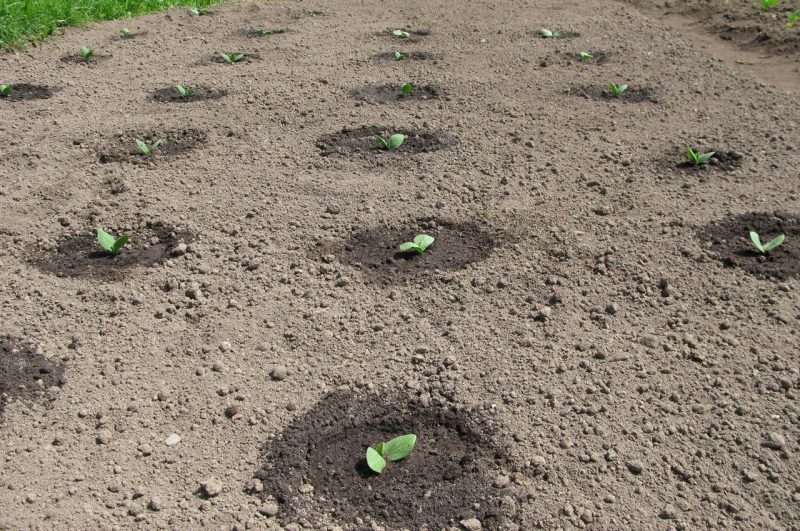
Soil fertility can be increased with the help of humus, nitrogen fertilizers, diluted with bird droppings water. Many underestimate the use of furnace ash as a source of potassium and trace elements. It is advisable to make fertilizer for digging in the fall or spring.
Outdoor Care
Zucchini is known as an unpretentious plant, but its cultivation requires compliance with several conditions.
Temperature mode
Academician Edelstein classified zucchini to the 5th group of vegetable crops - heat-resistant plants. They need warm soil, they can’t tolerate temperatures of 4–7 ° С, but they feel relatively good on hot days. Satisfactory conditions for growth and development are considered T from 15 to 17 ° C. For flowering and fruiting, 20–25 ° C is required.
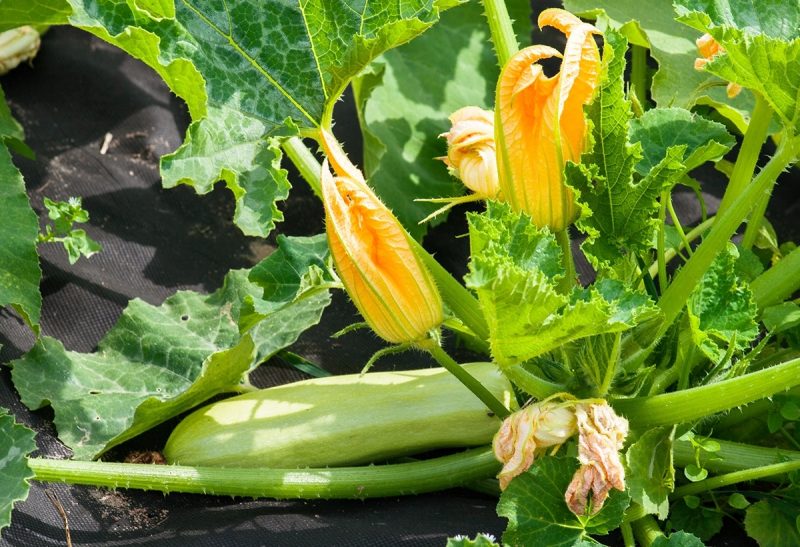
Zucchini die when the temperature drops for 2 days to 0 - 3 ° C, a combination of rainy weather and prolonged cooling with a temperature of 5-7 ° C. To avoid losses, cover young plants with a film or plastic glasses of suitable shapes and sizes. When the temperature is lowered, this method of protection is still used: in the evening, plants are watered in open ground with water heated to 35–40 ° C, then covered with a film or plastic containers.
Watering, fertilizing and fertilizing
Zucchini needs plentiful watering, but not excessive. Plants tolerate a lack of moisture, as indicated by leaf wilting. Watering is reduced during flowering.
Zucchini twice a season needs to be fed with organic and mineral fertilizers. Tuki go on sale have an explanatory text.Typically, manufacturers list for which crops they are intended, in what dosages, in what time frames, to be applied for certain crops.
Loosening and handling
Combine weeding with loosening. In order not to form a crust on the surface of the soil, after watering they are mulched with peat or humus. During the flowering period of zucchini and the formation of ovaries, they try not to disturb the bushes once again.
Pinching zucchini
This technique allows you to increase productivity. It should be noted that pinching squash and zucchini do not need pinching. All fruits of such forms are formed on the central shoot. In climbing zucchini, pinch the top of the shoot above the fourth or fifth leaf. The formation of ovaries mainly occurs on the lateral shoots, therefore, at the beginning of budding, you can remove part of the main stem.
Diseases, pests and control methods
Fungal infection in zucchini causes the appearance of spots of various shapes and colors. Plants are affected by powdery mildew, fusarium, anthracnose. The spots resemble a burn on the leaves and stems.
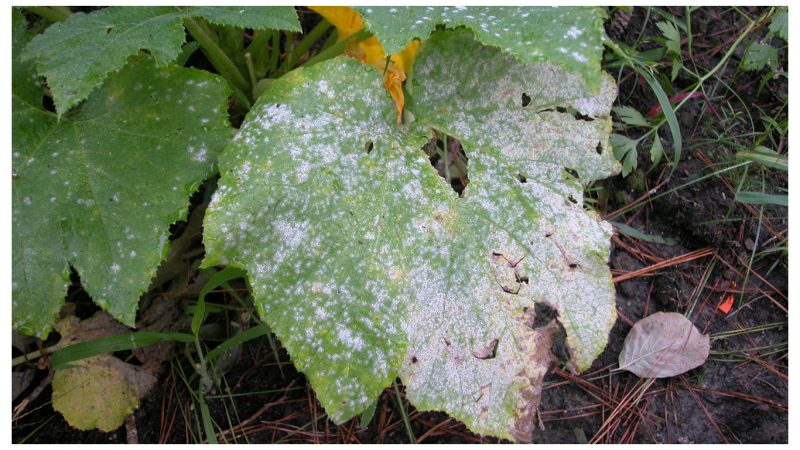
The spread of fungal and bacterial infections contribute to wet weather, excessive watering, high temperatures.
Preparation of Bordeaux liquid for processing zucchini from fungus:
- Dilute 100 g of copper sulfate in 1 liter of warm water.
- Add 100 g of freshly slaked lime in 9 l of water.
- The liquids are mixed until a blue suspension is obtained.
Powdery mildew is a formidable enemy of all gourds. A fungal infection is recognized by white spots and powdery plaque on plants. They are treated with sulfur preparations. Plants affected by downy mildew are sprayed with Bordeaux mixture.
Melon aphid causes great damage to vegetable marrows and other crops. A fertile pest gives up to 20 generations in one season. Colonies consisting of wingless females and larvae are located on the lower surface of leaves, on ovaries and peduncles. The pest sucks the cell sap, which leads to a slowdown in the growth and death of plants (without treatment). Spray with insecticides designed to combat sucking insects.
Collection and storage of zucchini
Greens are collected, reaching a length of 15–25 cm (depending on variety). Fruits can be stored for up to 2 weeks in the refrigerator. Use greens for salads, fry, prepare sweet pancakes, or add salt, garlic and dill. Convenient methods of preserving zucchini are canning and shock freezing.
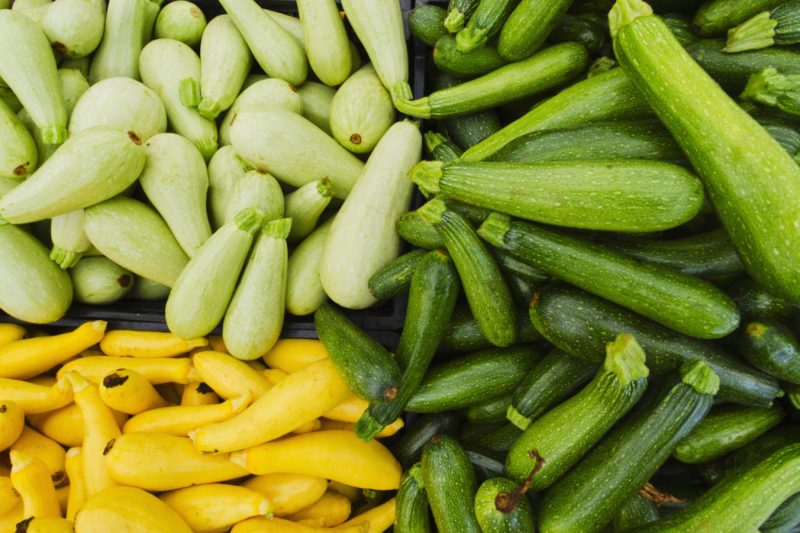
After reaching ripeness, the peel becomes hard, the pulp is more fibrous. Inside the fetus is a cavity with ripened seeds. Cut ripe zucchini with a stalk, stored in a cellar or other dry cool place.
Zucchini belong to the popular vegetables, are in demand due to unpretentiousness, productivity, taste. The owner of the site needs to make a minimum of efforts to provide the family with vitamin products from their own beds.












